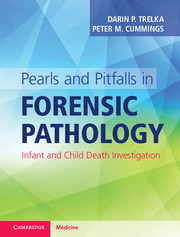Book contents
- Pearls and Pitfalls in Forensic PathologyInfant and Child Death Investigation
- Pearls and Pitfalls in Forensic Pathology
- Copyright page
- Dedication
- Contents
- Preface
- Book part
- 1 Background and setting of death investigation
- 2 History and philosophical issues
- 3 System diversity and jurisdictional items
- 4 The death call
- 5 The death scene
- 6 Post-scene evaluations
- 7 Post-autopsy processes and procedures
- 8 Death certification
- 9 Case examples
- 10 Summary
- References
- Index
- References
References
Published online by Cambridge University Press: 05 September 2016
- Pearls and Pitfalls in Forensic PathologyInfant and Child Death Investigation
- Pearls and Pitfalls in Forensic Pathology
- Copyright page
- Dedication
- Contents
- Preface
- Book part
- 1 Background and setting of death investigation
- 2 History and philosophical issues
- 3 System diversity and jurisdictional items
- 4 The death call
- 5 The death scene
- 6 Post-scene evaluations
- 7 Post-autopsy processes and procedures
- 8 Death certification
- 9 Case examples
- 10 Summary
- References
- Index
- References
- Type
- Chapter
- Information
- Pearls and Pitfalls in Forensic PathologyInfant and Child Death Investigation, pp. 88Publisher: Cambridge University PressPrint publication year: 2015



